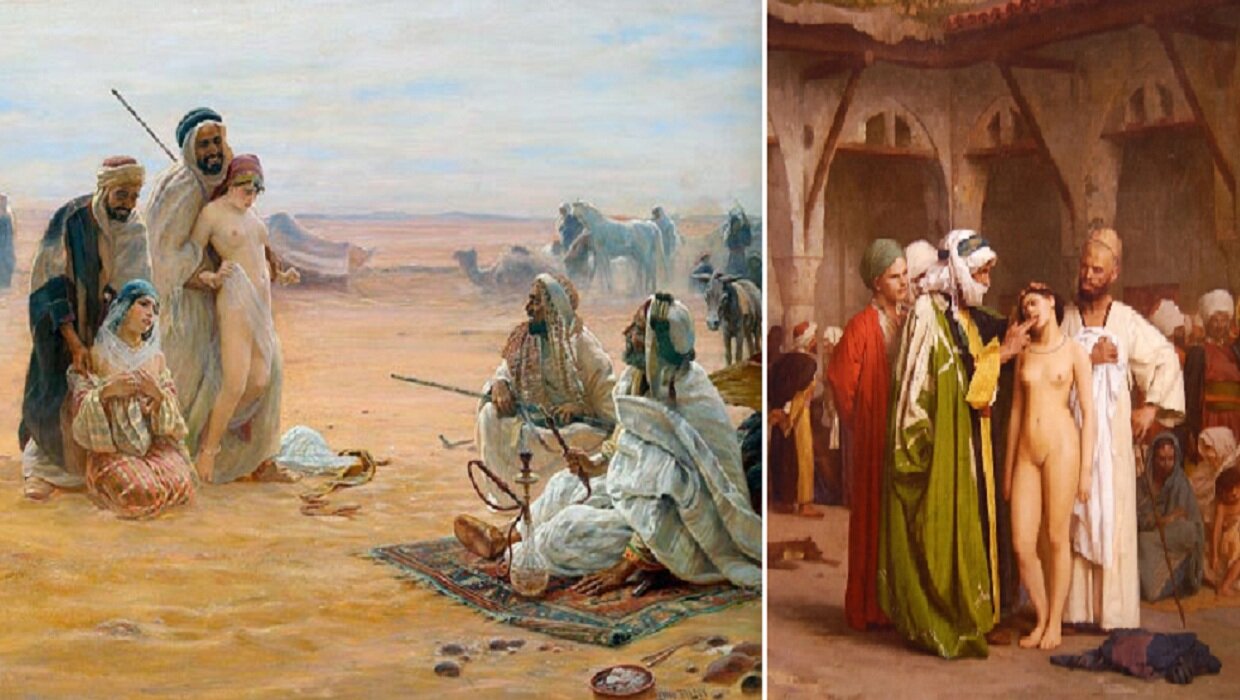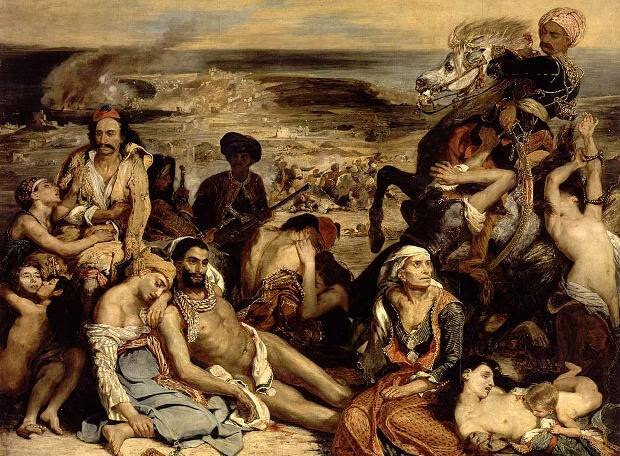The tragedy of the women and children of Chios during the Greek Revolution in 1821 in Istanbul can be considered a crime, as the priest of the English Embassy R. Walsh, a restless and courageous clergyman, writes.
He was in the city from the beginning of the revolt and closely observed the tragedy of the Greeks. He systematically recorded what he saw and heard. When he returned to England, he printed a chronicle of his experiences in Turkey during the Greek revolt. The priest collected information about certain women.
The Chios Massacre, Eugene Delacroix, 1824
The kidnapping and trading of slaves were carried on by Turk rogues who followed the campaigns as volunteers, with the sole purpose of plunder. Their method was as follows: They killed the male members of the family, captured the women and children, and collected all the valuables of the house. They then took their loot to the nearest customs office and obtained a "teskere", a certificate of slavery. From that moment on, the captives were the property of the owners of the "teskere".
In this way, writes the English clergyman, 41,000 teskeres were issued in Chios by May 1, 1822. Of the slaves, 5,000 were sold in Constantinople. Purchases were mostly made at the Aurut Bazaar, the women's market. It was a square building with an open courtyard in the middle. There were platforms with African slaves standing around. The white and most valuable women were in vaults with barred windows.
"But there were so many Chiotisses(women from Chios) that they were sold in the squares and in the streets. The most common place of human trafficking was the Baluk - Bazaar, the Fish Market. There, on June 15, 1822, Walsh saw a bunch of twelve- to fifteen-year-old girls being sold like animals in English markets. Many were half-naked. Terror and agony were painted on their faces. It was the most heartbreaking spectacle I ever saw. Impossible to describe. The Turks treated them with utter contempt. They examined them, slaughtered them like butchers do their lambs, and bought them for a hundred groschen-three pounds a head. About five hundred Chian women were sold in Psaragora".
The next day a slave market was set up in Peran, in the district of the European embassies, next to the Frankish churches. It was Sunday, and the Europeans, going to their temples to pray, passed among the enslaved Chian women. "This time the Christian slave trade took place in front of the eyes of the representatives of the European Powers, who considered that purchasing of a black heathen woman on the African coast was a crime punished by the death penalty. And now they saw a slave market before their own embassies, they saw people of the same religion bought like animals, endowed with the same qualities, the same virtues, and sentenced to life imprisonment for the most degrading slavery".










